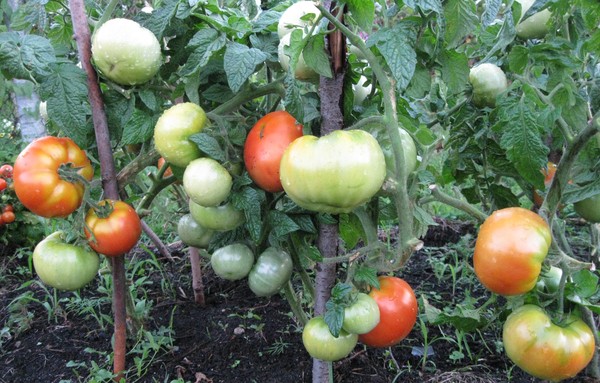 The Boni MM tomato does not take up much space in the garden, does not require special attention and painstaking care, and despite this, it brings an ultra-early and rich harvest of fruits. In 2001, this variety was included in the State Register for the Russian Federation and since then has become the favorite and reliable soil variety of many summer residents.
The Boni MM tomato does not take up much space in the garden, does not require special attention and painstaking care, and despite this, it brings an ultra-early and rich harvest of fruits. In 2001, this variety was included in the State Register for the Russian Federation and since then has become the favorite and reliable soil variety of many summer residents.
Content
General characteristics of the variety
In the State Register, Boni MM is characterized as a cultivar without hiding places and under temporary tunnel shelters in garden plots, homesteads and small farms of any region of the country. Originator of a grade: agricultural company "GAVRISH".
Ripening speed
The variety is among the ultra-ripe and the ripening time is only 80-85 days. The fruiting period is very short, since the plant almost simultaneously knits fruits on the first brushes, and forms a color on subsequent ones. Thus, the bush gives the entire crop in an average of 15-20 days.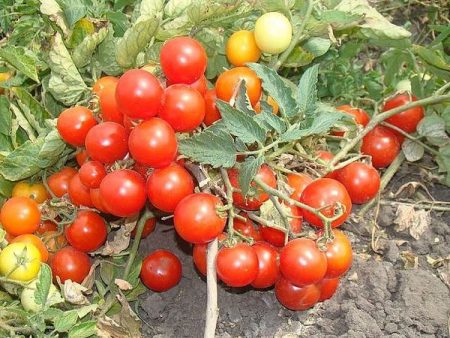
Botanical description of the plant
Bushes of tomato "Boni MM" of determinant type, that is, have limited growth. The maximum height of a tomato plant does not exceed half a meter. In addition, the variety belongs to the standard, which means tomatoes have a small, superficial root system and an erect, thick trunk. Plants with such characteristics are compact, neat and very resistant. The side stems of the bushes are powerful, covered with dark green leaves of the corrugated type. The number of stems and leaves is small, the crown of the plant is moderately thickened.
The first brush with color appears after the blooming of 5-6 sheets, the next are very densely placed, through one sheet or next to each other. On simple, unbranched inflorescences, the fruits are located on one stem, in the next order and are very compact. After the formation of 3-4 fruit brushes, the growth of the main stem stops.
Features of the fruit and their use
Fruits are flat-round in shape, slightly ribbed, weighing an average of 50-70 g. Unripe tomatoes are light green in color with a dark green spot at the peduncle; as they ripen, the spot disappears and, at the stage of full ripeness, the fruits acquire an even classic bright red color. The pulp, saturated with juice and fleshy, has 2-3 small chambers with a moderate amount of seeds. The taste is traditional tomato, without pronounced sweetness and acid. Among the ultra-ripening varieties Boni MM tomato is recognized as one of the best in taste characteristics.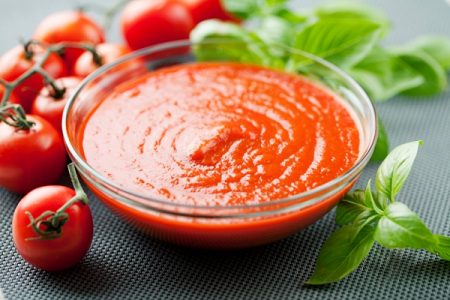
The information on the packaging with the seeds indicates the salad purpose of the variety. That's exactly what most vegetable growers use it. Thanks to the super-early ripening dates, these tomatoes are among the very first vegetables on the tables of summer residents. They are used in their natural form, and in vegetable salads and slices. The characteristics of the fruits and their ripening allow the use of tomatoes of this variety for preservation and early profitable sales.
Productivity
The yield of one bush is an average of 2 kg.Due to the peculiarities of the plants of this tomato, it is excellent to bear fruit in conditions of thickened planting, the yield per square meter can reach 16 kg.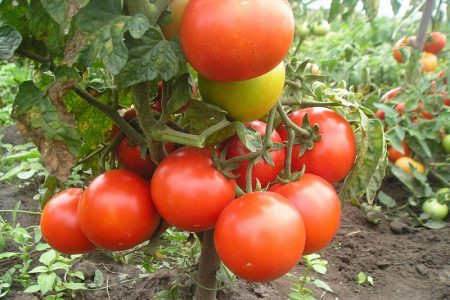
Agricultural technology varieties "Bonnie MM"
Sowing seeds
Sowing of seeds is carried out 55-60 days before the planned date of transplantation into the ground. You should be responsible for calculating the date of planting of tomatoes. Overexposed plants, just as not mature ones, are hard to adapt in a new place, discard color and poorly tied fruits.
In regions with long and guaranteed warm summers, the seeds of this ultra-mature variety can be sown directly in the ground. When grown in this way, the seeds in the month of April are sown on a bed with a thickened planting pattern or a distance of 10-15 cm is left between them. For the first time, the bed is covered with a film. After seedlings, seedlings are carefully watered as the topsoil dries. Too thick shoots thinned out in the phase of 2-3 real leaves, more rare in the phase of 4-5 leaves. Plants removed during thinning can be planted in a new place. To protect small seedlings from pests, they are sprinkled with ash or treated with special tools. It is good to feed young tomatoes every 7-10 days with organic fertilizers, for example, fermented infusion of nettle or mullein. It is believed that tomatoes grown by this method are not stressed during transplantation and therefore get stronger, and the crop is earlier.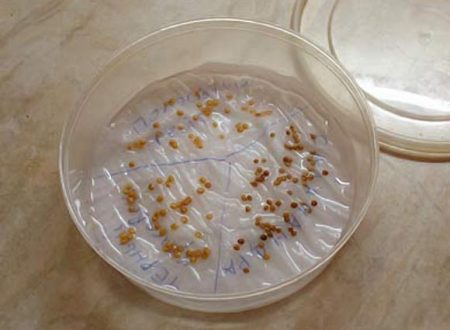
Site preparation and fertilization
During the winter period, the soil is very compacted and before planting it must be dug to a depth of 20-25 cm. If the soil was not filled with fertilizers during the autumn work, then this can also be done in the spring. It is most productive to add nutrients to the wells immediately before planting. You can use this composition: 2 cups of wood ash are added to the compost bucket. When planting under each tomato spend one liter of the mixture.
Dates of transplantation into the ground and the features of planting varieties
The timing of transplantation into the soil varies depending on the cultivation zone. In the warm southern regions, this time falls on April 15-25, in the middle lane - from May 1 to 10, in the cool northern regions - from May 25 to June 10. In these periods, as a rule, spring frosts already irrevocably recede.
Due to the fact that Boni MM refers to ultra-ripe, stunted, standard tomatoes, various planting methods can be used. Here are some of them:
- Square-nesting method. Landing holes are marked at a distance of 60-65 cm from each other. In each of them, 2-3 seedlings are planted at a distance of 5-7 cm.
- Tape method. A solid furrow is prepared for planting, with a depth of 15-20 cm. The length of the furrow depends on the desire and ability. Seedlings are planted in a furrow at a distance of 20-25 cm from each other. If several furrows are planned, then the distance between them should be about 60 cm.
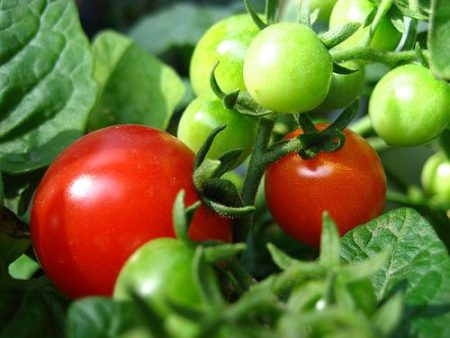
To make the rows even for marking, use pegs and a cord stretched between them. Wells or a furrow are shed abundantly with warm water and left for a while so that the water is absorbed. Then the seedlings are carefully removed from the individual pots and without breaking the earthen coma they are laid out at the right distance, depending on the chosen scheme. When planting, the plants are buried 3-4 cm deeper than they previously grew in separate containers. Furrow or holes are covered with soil, compacted and watered well again. Watering is carried out very carefully, without eroding the soil near the seedlings.
Thus, with any planting method, 6-8 plants fit on one square meter. This greatly saves space in the garden, and at times increases productivity. At the same time, the plants feel great.
Transplant Care
The first two weeks the plants do not need special care. Quite the contrary, they need time to get used to the new conditions of life. The main tasks for this period are to maintain soil moisture and protect against night frosts. To maintain moisture, plants are moderately watered every two to three days. So that a crust does not form on the surface of the soil, the next day after watering, the soil is gently and shallow loosened.
The following methods are used to protect against critically low temperatures:
- hats from newspapers or burlap are put on the bushes;
- build caps around plants from tree branches or spruce branches;
- arrange artificial smoke from heaps of garbage previously prepared and laid out over the site;
- spend night small-drop irrigation by sprinkling.
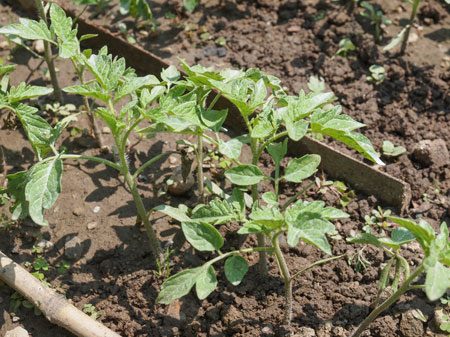
After the plants take root and get stronger, the care will consist in rare and not plentiful watering, weeding and loosening. It is not necessary to pinch and tie up plants of this variety. Regular weeding and loosening can be replaced with one simple mulching procedure. Mulching summer residents are often neglected, considering it a waste of time. In fact, this simple and time-consuming agrotechnical technique performs several important functions at once:
- mulch protects the topsoil from drying out;
- a layer of mulch prevents weeds from germinating;
- when watering, protects the topsoil from erosion;
- accelerates ripening and increases productivity;
- when mulching with grass, a natural, additional fertilizer of the soil occurs.
Plants of this variety do not require additional fertilizing during the growing season. For active growth and good fruiting, it is enough nutrients introduced into the soil before or during transplantation into the soil.
Diseases and Pests
The Boni MM tomato has low resistance to diseases and pests. But this does not threaten him, given the timing of sowing and transplanting into the soil, he perfectly gives the crop in the first summer month, when diseases and pests are still inactive.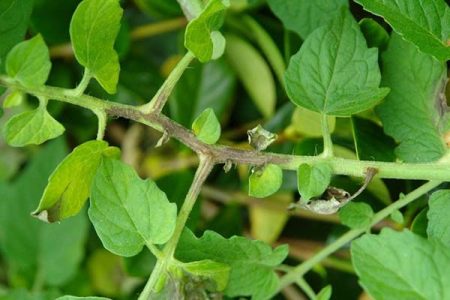
Advantages and disadvantages
For several years, summer residents leave numerous reviews about the tomato of this variety. Almost all of them are positive and characterize the variety as having no shortcomings. But there are quite a few advantages. Here are the main ones:
- very early ripening;
- friendly return of the crop;
- good taste (among the early ones);
- easily transfers transplant;
- not demanding in care;
- suitable for any region of the country;
- grows well in open ground;
- high productivity;
- does not require pinching and tying;
- grows well and bears fruit with an increased planting pattern.
Not all summer residents have the desire or the opportunity to regularly spend a lot of time and effort on complex agrotechnical methods for caring for tomatoes, and everyone dreams of eating fresh vegetables from their own garden. Absolutely undemanding and unpretentious grade "Boni MM" for such gardeners will be a real find. With minimal effort, in the first summer month he will bring an excellent harvest of delicious fruits.
Reviews
Elena, Moscow region
The variety in seedlings is very stocky, low, the leaves are noticeably darker than the rest. At first she planted without a garter, but when she was all strewn with tomatoes, he began to fall over and had to be tied up. Do not stepchild. The first fruits were harvested in the greenhouse on June 23 when sowing seedlings on March 1. Fruits: the first on 100 gr., Then went finer than 50-60 grams. In the first hundred-gram tomatoes, there were no seeds at all. Taste: for an early variety, very good tomato, without excessive acid, the skin is of course thick. Productivity: barely barely reached the claimed 2 kg from the bush. But in general, I am satisfied with the variety.
Larisa, Nizhny Novgorod Region
Last year I planted on a regular bed very often, did not tie it up. The bushes are very low, about 40 cm, strong. Ripening in my garden was the first, the tomatoes are sweet. I left the tomatoes for seeds, but when I was about to collect the seeds, I was very upset - there are no seeds! Satisfied with the variety, I will buy and plant more.
Inna, Rostov Region
In February, she sowed, at the end of May they already ate. I can’t say that the taste is super, but for the former it’s even nothing. The harvest was given as in the description, very friendly and the daikon had already been sown by the appearance of the following tomatoes in place of these bushes.
Vladimir, Mordovia
I have ripened on June 2. Not at all sour, a good early variety. Productivity, as stated, 2 kg. A variety from the series, planted and forgot.




 Low-growing tomatoes, without pinching: 5 of the most delicious varieties
Low-growing tomatoes, without pinching: 5 of the most delicious varieties Why tomato seedlings grow poorly
Why tomato seedlings grow poorly We grow a tomato in a shell
We grow a tomato in a shell Growing tomatoes without watering according to the method of Kazarin
Growing tomatoes without watering according to the method of Kazarin